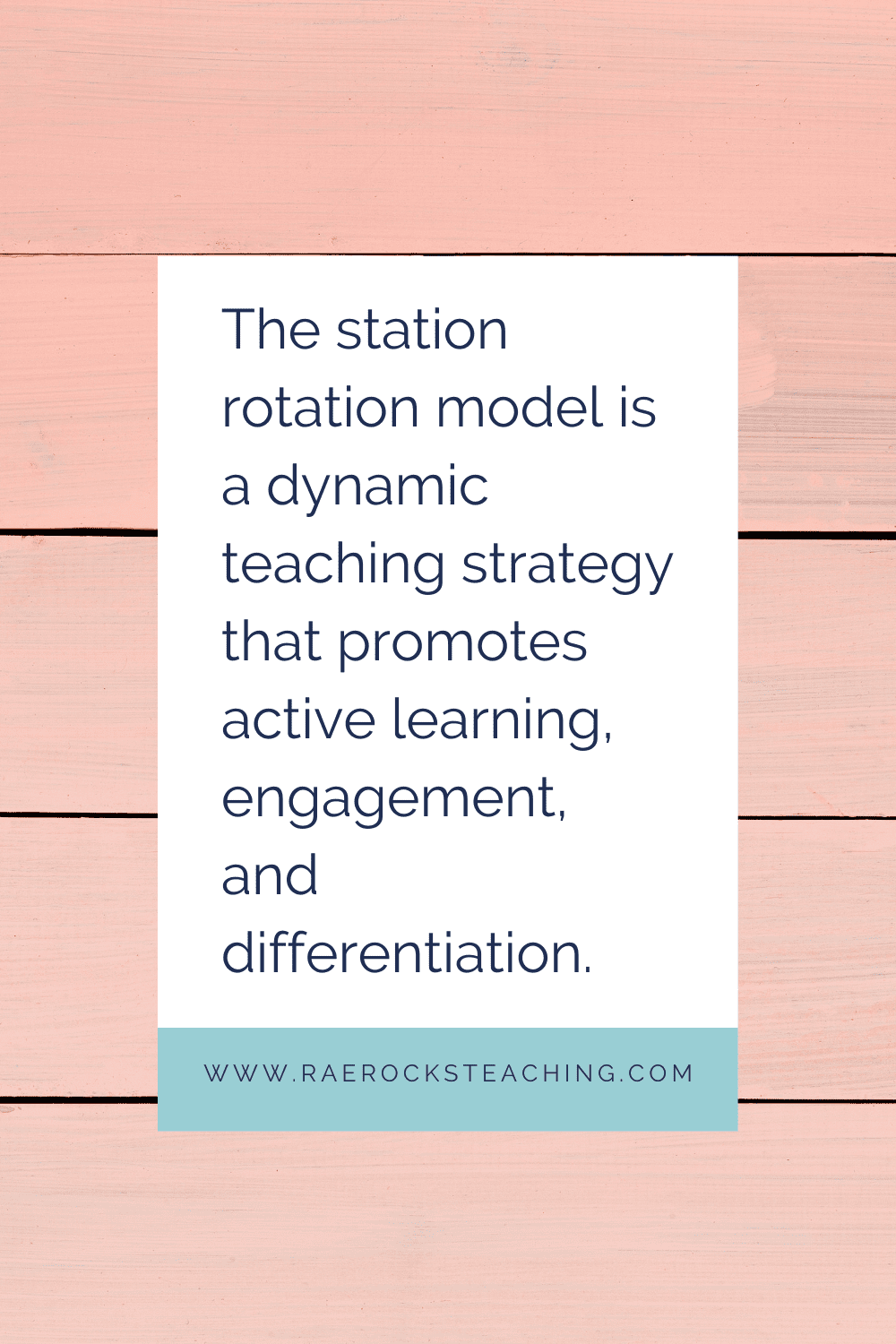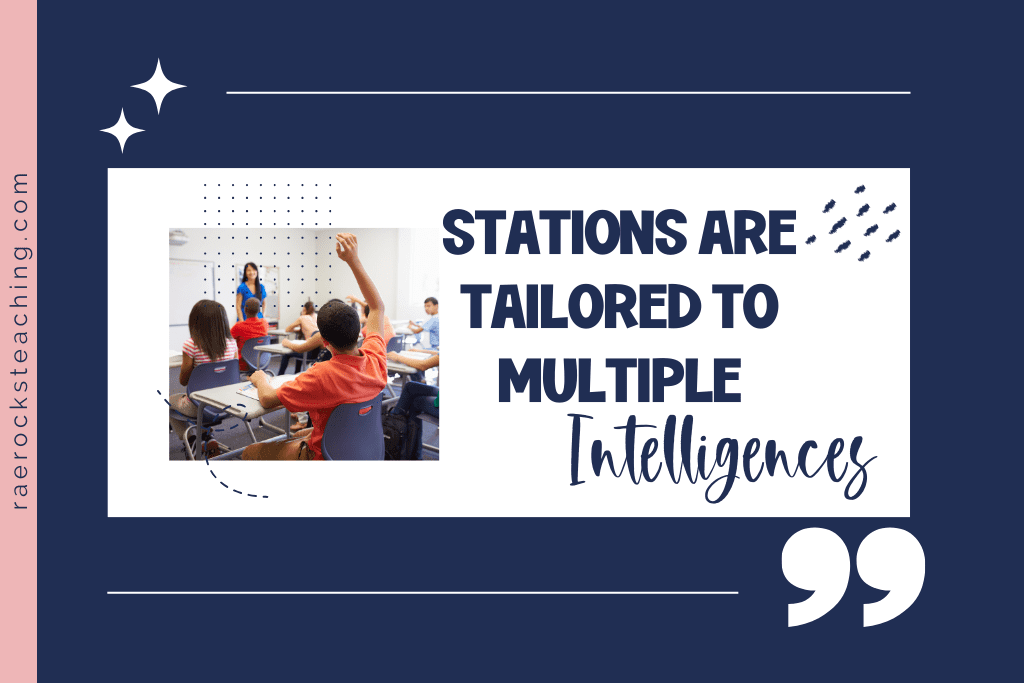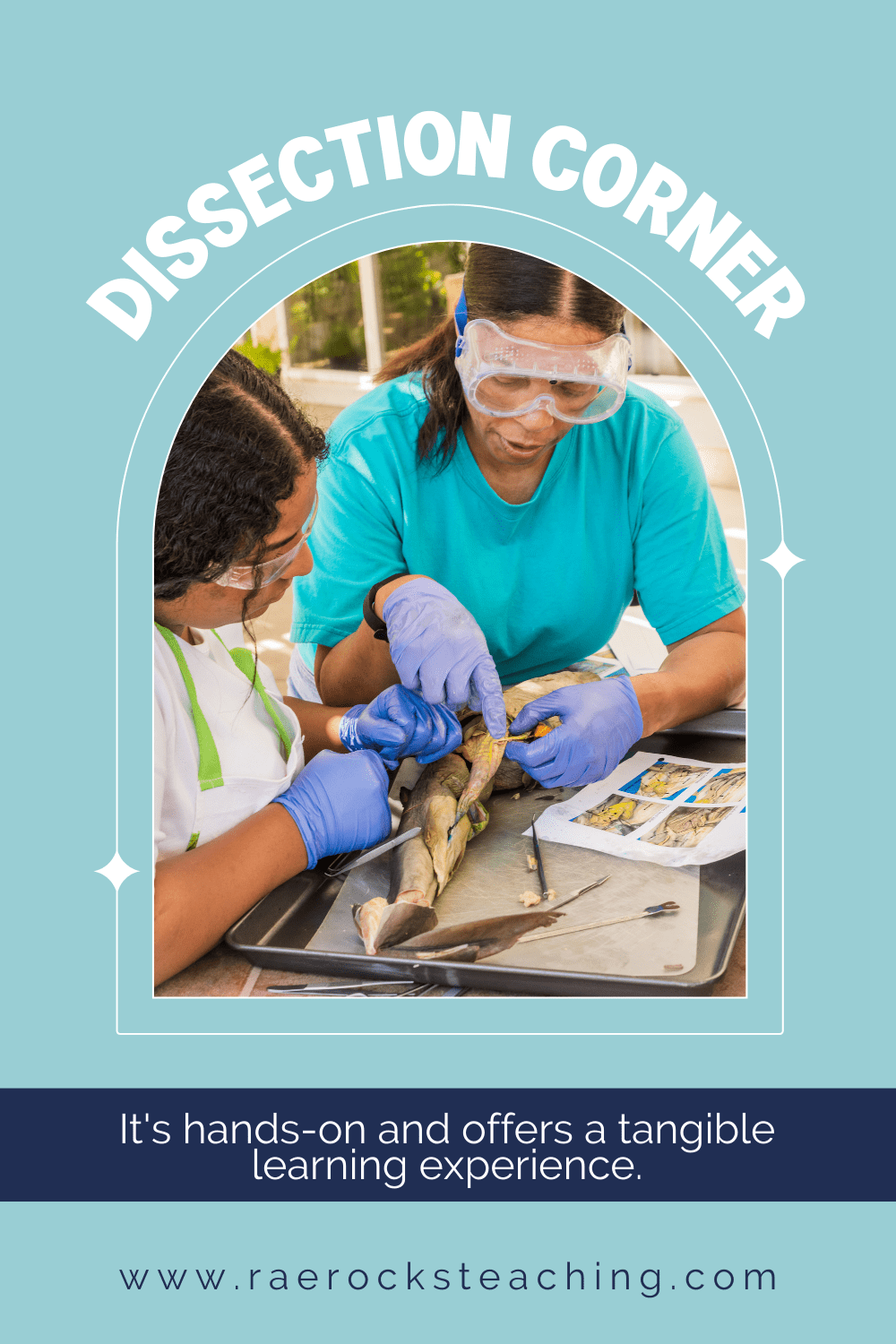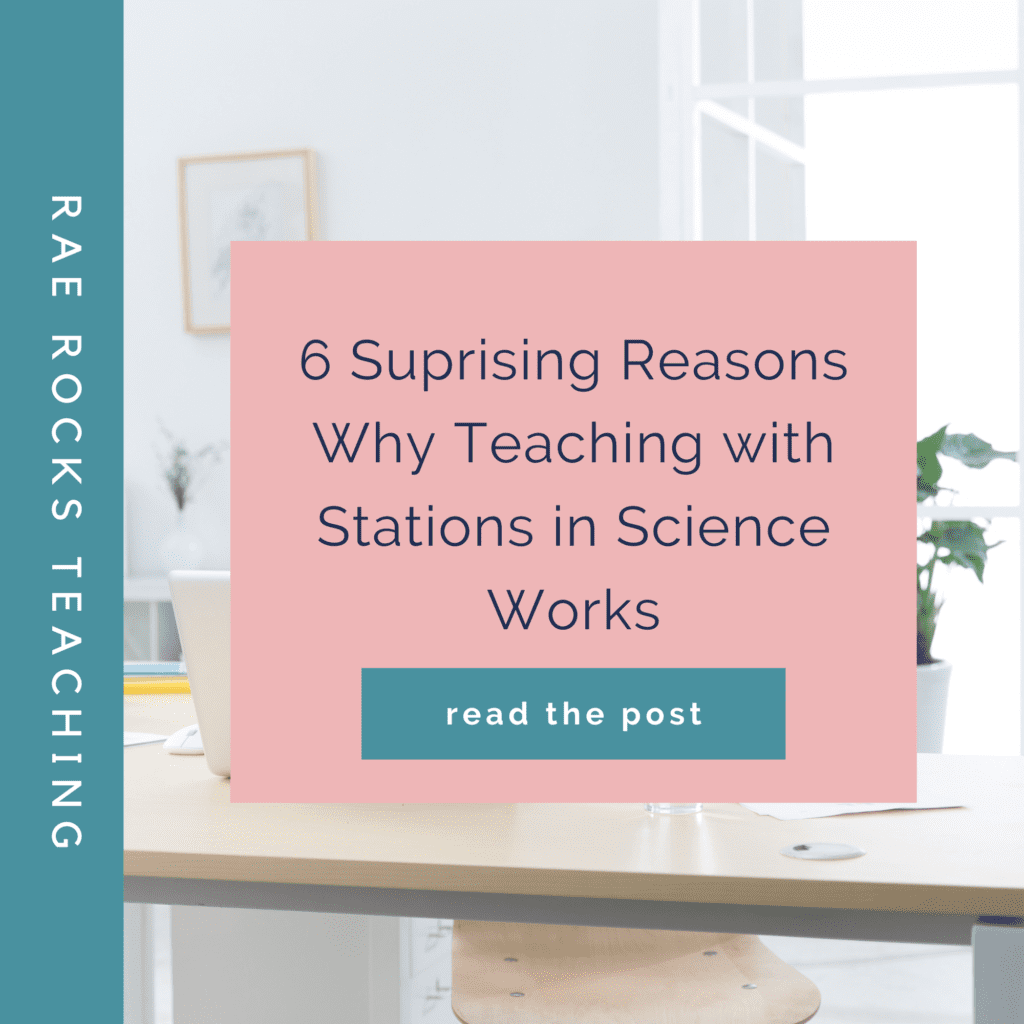Hey there, friend!
Does teaching with stations sound intriguing to you? If you’re a high school biology or anatomy teacher who’s embraced the flipped classroom approach, you’re already ahead of the curve. But what if I told you there’s another teaching strategy that can elevate your classroom experience even further? Let’s dive in!
Looking for more ways to engage your lessons in class?
A Brief Background on Teaching with Stations
Before we get into the nitty-gritty, let’s take a quick trip down memory lane. Remember those days in elementary school when the teacher would set up different activity corners in the classroom? You’d rotate from one station to the next, each offering a unique learning experience. Well, teaching with stations is the grown-up version of that, tailored for our high school students.

-
Save
The station rotation model isn’t just a throwback to our younger days; it’s a dynamic teaching strategy that promotes active learning, engagement, and differentiation. And the best part? It fits seamlessly with the flipped classroom approach.
Why the Station Rotation Model Rocks
ONE | Diverse Learning Experiences
Stations are tailored to multiple intelligences. Every student is unique. Some are visual learners, while others are auditory or kinesthetic. Stations allow you to cater to these varied intelligences. For instance, a video station can appeal to visual and auditory learners, while a hands-on activity station can engage kinesthetic learners. It also encourages holistic understanding. By exposing students to different types of activities, they get a 360-degree view of the topic, ensuring a deeper and more comprehensive understanding.

-
Save
TWO | Smaller Groups, Focused Attention
Station rotation activities boost participation. In smaller groups, even the shyest student finds it easier to voice their opinions, ask questions, and participate actively.They also help enhance Peer Learning. With fewer students, there’s a better chance for them to learn from each other, share insights, and collaborate effectively.
THREE | Promotes Student Autonomy
As students navigate from one station to the next, they become responsible for their learning journey. This sense of ownership can lead to increased motivation and engagement. They also are building decision-making skills. At each station, students often have to make decisions – how to approach a task, how to divide roles, or how to solve a problem. This constant decision-making process hones their critical thinking and problem-solving skills.
FOUR | Seamless Integration with Flipped Learning
Since the foundational learning happens at home in a flipped classroom, station activities can dive straight into application, discussion, and exploration. This ensures that classroom time is utilized to its fullest potential. Stations can also be designed to mimic real-world scenarios, allowing students to apply what they’ve learned in a practical context.
FIVE | Dynamic and Flexible Learning Environment
The traditional lecture model can become monotonous for students. Stations, with their varied activities, bring a refreshing change, keeping students alert and interested. Whether it’s a complex anatomy concept or a fundamental biology principle, stations can be tailored to suit any topic, ensuring relevance and engagement.

-
Save
SIX | Enhances Soft Skills
As students collaborate at each station, they learn the importance of teamwork, communication, and compromise. And with a fixed time allocated to each station, students learn to manage their time efficiently to complete the tasks at hand.
Making It Work: Setting Up Your Station Rotation Activities
You must plan ahead. Decide on the number of stations you want and the activities for each. For a biology class, you could have a microscope station, a model-building station, and a virtual lab station. Allocate a specific amount of time for each station. Use timers to keep things on track. Each station should have clear, concise instructions. Remember, the goal is for students to be independent. Consider the composition of your groups. Mix and match to ensure a balance of skills and personalities. After each rotation, gather feedback. What worked? What didn’t? This will help you refine the process for next time.

-
Save
Sample Station Rotation Activities for Biology and Anatomy
Dissection Corner: Perfect for anatomy, have a station dedicated to dissections. It’s hands-on and offers a tangible learning experience.

-
Save
Virtual Labs: Leverage technology by having a station where students can conduct virtual experiments or explore 3D models.
Discussion Pods: Pose a question or a case study and let students discuss. This is great for developing critical thinking.
Flashcard Fun: A station with flashcards can help reinforce terminology and concepts.
Creative Corner: Let students draw, craft, or even act out concepts. It’s a fun break from the traditional and caters to the creative minds in your class.
Teaching with stations and the station rotation model is like adding a dash of spice to your already fantastic flipped classroom recipe. It’s dynamic, engaging, and offers a plethora of benefits for both you and your students.
Don’t forget to Sign up for the FREE GUIDE | Flip & Thrive: Your 5-Step Quickstart Guide to a More Engaging Classroom

-
Save
I love sharing helpful content with y’all and would love to connect on IG or Facebook. I’m on TikTok too! Follow me and send me a DM with what you need more of because I’m here to help! If you are looking for even more inspiration, find me on Pinterest!
Wanna read more?
3 Reasons You Should Use Interactive Stations To Teach Human Anatomy Positions
How and Why I Use Student-Led Stations to Teach Kingdoms Living Organisms
Flipped Teaching Approach: A True Game-Changer for Biology and Anatomy Classes
Share via:









One Response